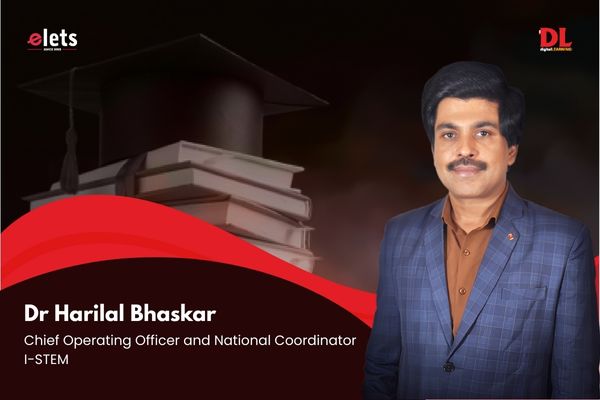India stands on the brink of a major scientific awakening. Our universities, laboratories, and startups are advancing across boundaries such as quantum materials, bioengineering, and microelectronics. However, beneath this apparent progress lies a quieter challenge: our efforts remain fragmented. The country has invested heavily in laboratories, digital data, and a skilled workforce, but much of this capital operates in isolation.
When knowledge flows through separate channels, innovation slows. The price of fragmentation is not simply excessive spending, but loss of momentum and opportunity. Therefore, our challenge is not invention alone, but invention Merger.
From data warehouses to live networks
India no longer needs another archive of research reports. What is needed now is a lively and intelligent collaboration network that connects researchers, laboratories and innovators on an ongoing basis. Instead of documenting what has already been achieved, this ecosystem should anticipate what could emerge – identifying partnerships, preventing overlap, and accelerating the path from concept to real-world impact.
Such a transition – from static storage to dynamic communication – depends on the thoughtful use of Artificial Intelligence (AI) and blockchain As dual enablers.
Artificial intelligence as a catalyst for collaboration
Artificial intelligence can serve as Nervous system From this network. By analyzing project data, publications, patents, and usage records, intelligent models can identify invisible thematic connections between organizations and recommend potential collaborations.
Its basic functions may include:
- Predictive mapping – Matching research objectives, technological readiness, and instrumentation needs to detect natural partners.
- Smart notifications —Alert scientists when a complementary facility, project, or innovation emerges.
- Semantic networks — Visually connect research groups and highlight promising gaps or intersections.
AI thus becomes a proactive collaborator, uncovering patterns that no human committee could detect manually.
Blockchain as a trust framework
Sustainable collaboration requires verifiable trust. Blockchain technology provides exactly that – an immutable ledger that ensures authenticity, traceability, and fairness. Every project milestone, reservation, or data exchange can be cryptographically locked and time-stamped, resulting in a transparent record of contribution and ownership.
Its advantages include:
- Ensuring integrity With permanent, tamper-proof audit trails.
- Automated agreements Smart contracts distribute credit or activate data sharing once conditions are met.
- Shared governanceRemove central control and embed accountability directly into the code.
Through this, trust is no longer verbal or institutional, but rather… athlete.
A federal model for the global south
While many global models concentrate research data, India is able to design a model Sovereign federated network Each institution retains control of its own data sets and equipment while sharing metadata for national-level visibility. This approach reflects the principles underpinning India’s digital public infrastructure – from Unified Payment Interface (UPI). to ONDC – Decentralized, interoperable, and inclusive.
Such a system reflects the country’s spirit of cooperation and could serve as a blueprint for the broader Global South, demonstrating how openness and independence can coexist.
The new logic of collaborative growth
As AI and blockchain technology converge, the economics of search fundamentally change:
- Technology transfer is accelerating Complementary expertise is recognized sooner.
- Public investment becomes effectiveWhile reducing duplication through transparent audit trails.
- Startups and MSMEs are getting entryAnd access to verified data and shared facilities to innovate alongside large enterprises.
- Knowledge flows horizontallyallowing insights from one domain to inform breakthroughs in another.
Cooperation, in this context, is not charity, but rather a strategy.
Cultural renewal: from competition to co-creation
Indian science has long celebrated individual excellence. The next limits are Collective excellence – Where recognition grows through shared discovery. In a connected network, algorithms can quietly suggest meaningful intersections — a researcher in Pune discovers a similar study in Guwahati, or a startup finds a laboratory match in Hyderabad.
Over time, these subtle connections build a culture in which cooperation replaces isolation Design for collaboration An integral part of daily research life.
The way forward
Realizing this vision will require close coordination between ministries, funding agencies, universities and industry clusters. It is encouraging that the foundation is already visible.
under Office of the Principal Scientific Advisor (PSA)There are two pioneering initiatives that have set strong precedents:
- I-STEM (Indian science, technology and engineering facilities map) – Providing a national inventory of research equipment and access to facilities.
- Churning – Connecting innovators, companies and institutions through collaborative challenges and partnership calls.
Read also: PhilTech Rangarajan Dr Sagunthala Research and Development Institute of Science and Technology
In addition, several ministries have built complementary systems that can now be standardized:
- the Department of Science and Technology (DST) Manages platforms such as Vigyan Prasar Media Science Portal, Science, Technology and Innovation Knowledge Portal 2020and India-Science, Technology and Innovation Centre,Advancing open knowledge and scientific communication.
- the Department of Biotechnology (DBT) runs BioRRAP and Pride BiotechnologyThis ensures responsible regulatory oversight and transparent data exchange.
- the Council for Scientific and Industrial Research (CSIR) Integrates its network through OneCSIRenabling coordinated research and development across laboratories.
- the All India Council for Technical Education (AICTE) Supports platforms such as an idea and Vishwakarma To promote innovation and data analysis in technical education.
- the Ministry of Education Continues to support research programs including fingerprint, Sparkand stepwhich promotes interdisciplinary and global collaboration.
By weaving these national efforts together – across PSA, DST, DBT, CSIR, AICTE and the Ministry of Education – and infusing them into AI-guided intelligence and Trust secured by blockchainIndia is capable of building the first country in the world National Research Collaboration and Visibility Platform (NRCVP): A living digital organism that recognizes opportunities, maintains integrity, and synchronizes innovation in real time.
Harmony of communication
Soon the power of Indian science will not be measured by the volume of data it carries, but by the fluency with which that data interacts. When the search for recognition stops and begins It resonates across communitiesInnovation will no longer move in parts; it will move In harmony.
Views expressed by Dr. Harilal Bhaskar, Chief Operating Officer and National Coordinator at I-STEM, under the Office of the Principal Scientific Advisor (PSA), Government of India.








